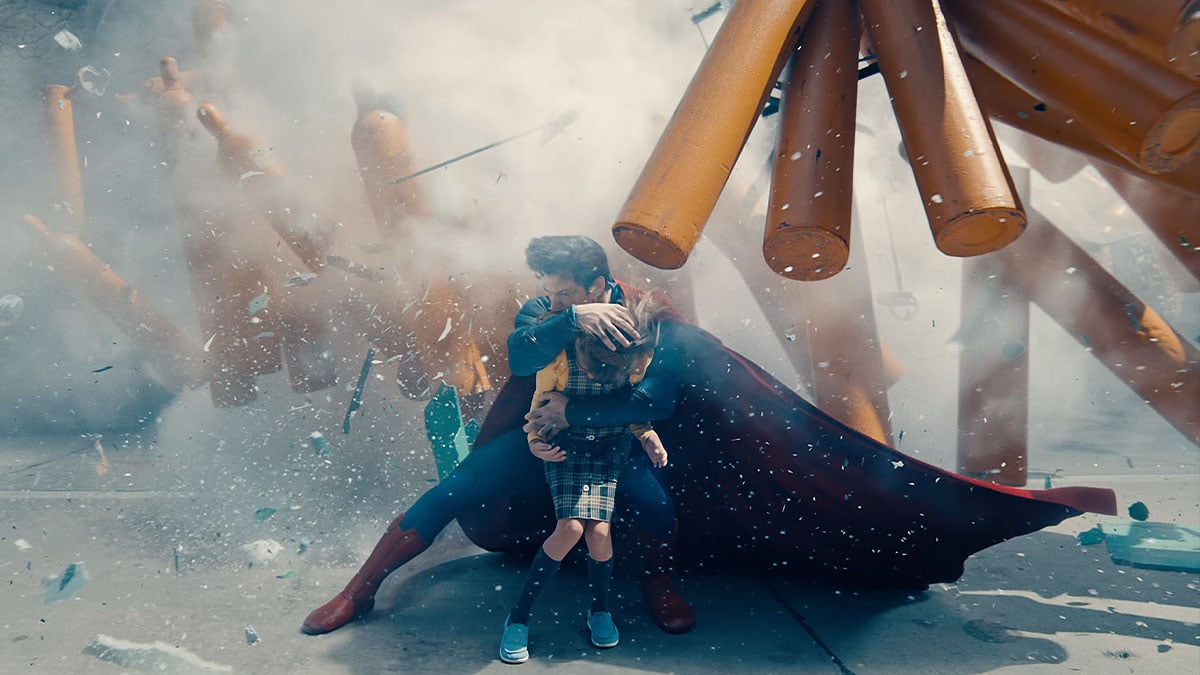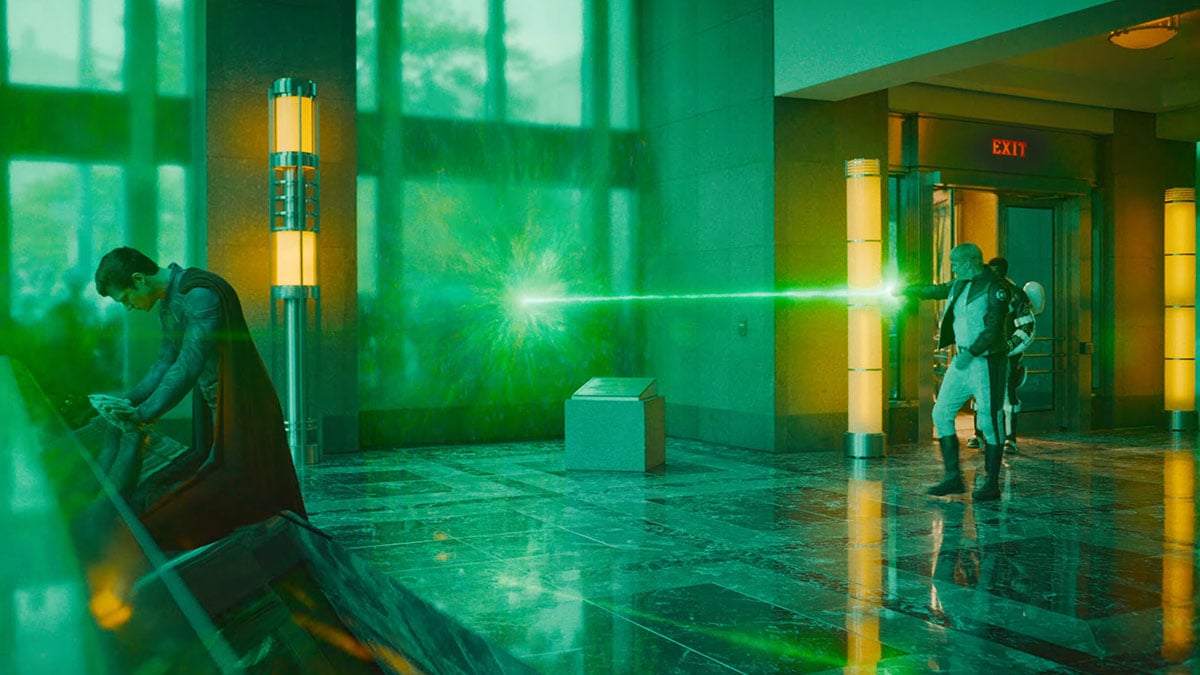
Taken as a whole, the Mission: Impossible series has evolved into an unrecognizable image of what it once was: a standard, but incredibly entertaining espionage thriller that had Tom Cruise doing minimal amounts of ludicrous stunts. Yes, he still dangled from a ceiling and jumped from a moving helicopter onto a speeding train; but the original film was never conceived as a means to continue the adventures of mega-spy Ethan Hunt.
Yet three sequels spawned from it, and the only thing they have in common is that they each sported Mission: Impossible in the title. It’s as if a new director with a complete different sense of style and taste, wanted to expand the budget and create their own image of Ethan Hunt and the cinematic adventures he finds himself in.
This is not a negative point against the Mission: Impossible series as a whole (only John Woo’s effort was a self-indulgent mess). Each new vision a director chooses to take, offers a chance to inject fresh juice into the grueling action genre that exists today. This is exactly the case when the acclaimed mind behind animation, director Brad Bird, was tasked with picking up where J.J Abrams (now acting as producer) left off.
Choosing a left-field choice for a director of a project is always a shaky one initially – Bird had never made a live-action film before Mission: Impossible – Ghost Protocol – but, every once in a while it pays off big time. It’s even rarer when the film stands head and shoulders above not only the other titles in its series, but towers over any action film to appear before it in terms of scale and excitement value.
Like this year’s other slick and well-oiled hit Fast Five, the plot is secondary to the action sequences, which hurl the picture forward from one big set piece to the next. The villain here is a cardboard cutout from any James Bond picture from its lineage; his only goal is a nuclear holocaust that will submerge humanity into a general reboot of population and control. Neither spectacularly riveting nor silly enough to appear campy, Ghost Protocol is a spy tale that doesn’t rewrite anything new from the typically reused thriller canon. It’s easy to comprehend though, and doesn’t rely on forced twists to keep the pulse pumping mid-way through the picture.

This is more of a connect-the-dots film, with each dot serving as a gigantic globe-trotting action sequence and everything in between acting as a debriefing of sorts. The opening scene inside a Russian prison expertly shows the choreographed and playful fun that Bird carries over from his animated films and pastes into his live-action proceedings. It moves so efficiently with timing that’s designed with pinpoint precision as it leads into the trademark lit fuse opening credits effortlessly.
The fact that there is basically no dialogue expect for a few wisecracks and the inclusion of music from Dean Martin, is even more icing on the cake. The next sequence is just as equally impressive in originality that features a nifty hologram gadget which helps the team to steal files from the Kremlin, with Cruise and recently promoted field agent Benji Dunn (Simon Pegg) dressed in full Russian uniform.
Bird outdoes himself for the highlighted scene that appears in every trailer marketed for the film, which is easily going to be the most talked-about sequence to come from Ghost Protocol. Cruise must scale the Burj Khalifa in Dubai, using only two suction gloves to climb eleven stories, in an attempt to hack into the building’s server room. Having the actor perform his own stunt here is crucial step towards providing a real feeling of terror as he holds on for dear life.
You always have the undeniable sense that Cruise is literally thousands of feet in the air dangling from a single glove. This is an experience that doesn’t happen in movies often: a genuine palm-sweating vertigo that has you holding your breath with each passing second. Watching this scene in an IMAX theater is worth every penny and wouldn’t have had the same effect if it was shot in 3D instead.
Bird opted to film certain action sequences using IMAX 70-mm film, which is a much more satisfying way of sucking audiences into the action as well as making them pay extra money for a ticket at the same time. This is the aim that 3D films struggle to accomplish and a trend that directors should pay attention to for future comparison.

The thrills in Dubai are hurdled over on such a grand level, that Ghost Protocol loses some steam afterwards and settles down for an overlong section of exposition. This is where Jeremy Renner’s role as a supposedly inexperienced analyst takes full effect and is intertwined with secrets Ethan is hiding from the team. None of the actors are at fault here; they all do their jobs of providing interesting variations of the super-spy that is well above the bar of mediocrity set for blockbusters of this nature. The problem with having a picture that is stuck on full throttle mode to entertain on a physical front, is keeping up the pace when the dialogue takes over.
Everyone wants to see the next big action set piece and the audience’s interest begins to waver. This however, is a pitfall for almost every classic action film that falls short of greatness. Raiders of the Lost Ark is a perfect example of ideal pacing throughout its run time, a film that doesn’t stutter in between scenes of gunfire and explosions and works more functional because of it. Still, Ghost Protocol nails its climax with an innovative fistfight set in a futuristic parking structure with shifting floors and countless opportunities for using cars as disposable props.
Cruise and company all work seamlessly within the action, especially when Bird incorporates a good chunk of humor for them to spew at each other from time to time. Michael Giacchino’s score is another extra source of high-pitched amusement that heightens the film’s stimulating tone it accompanies. What Ghost Protocol really benefits from however, is having its lead star appear almost indestructible at the age of 50 and not seem superficial.
Hollywood has an extreme emphasis on hulking young actors who will be the future for action films, yet this is the granddaddy of them all with a middle-aged Cruise doing his own stunts that no one would ever think about attempting. This is proof that his appeal as an actor is still mostly intact and that the mold for action heroes is meant to be broken.
Mission: Impossible-Ghost Protocol may be nothing ground-breaking but it is the best example of how to make a skillfully made action film that works because of all the right elements that are blended together to create pure adrenaline bliss. This is entertainment at its highest level.





Published: Dec 20, 2011 05:05 pm